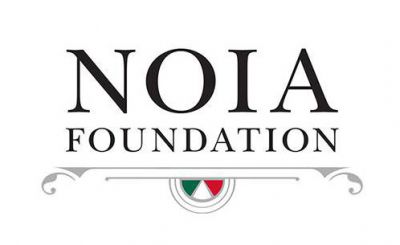NOIA Foundation and Western Reserve Historical Society hosted a presentation on recognition of Italian citizenship for individuals of Italian descent born in the United States.
Despite an unusually brutal cold that gripped Cleveland for a few days at the end of January forcing schools, universities and numerous prominent local institutions to close or cancel previously scheduled events, the Western Reserve Historical Society kept its door open on Wednesday, Jan. 30 to welcome a large group of participants to “To be or not to be an Italian citizen: this is THE question!” The presentation was organized by NOIA Foundation in collaboration with WRHS and guest speaker, Serena Scaiola, former Hon. Consul of Italy in Ohio. After brief opening remarks offered on behalf of Angie Lowrie, Director of the Cleveland History Center, by Pamela Dorazio Dean, Curator for Italian American History at WRHS and a warm welcome by Angie Spitalieri, NOIA Foundation Executive Director, Serena Scaiola took the podium to present attendees with the possibility for U.S. citizens to derive Italian citizenship from Italian ancestors. General eligibility rules, documents acquisition and legalization and fast facts, together with the overall application process were also examined during the presentation, which was followed by a Q&A.
The general framework governing Italian citizenship is currently Law 91/1992 which, in contrast with previous laws, reassess the importance of individual intention in the acquisition or loss of citizenship and recognizes the right to hold more than one citizenship simultaneously. Article 1 reaffirms the principle of “jus sanguinis” (blood right), by which any children born of an Italian father or mother instantly inherit the Italian citizenship. However, the inheritance of the Italian citizenship through the maternal line is only possible for those born after January 1, 1948. Determination and recognition of Italian citizenship is subject to the demonstration by the applicant that his or her direct ascendants uninterruptedly maintained their Italian citizenship. Dual citizenship with Italy can be claimed through parents, grandparents or great-grandparents. If pursed through a grandmother, it is only available through a judicial action in Italy.
While U.S. law does not formally recognize dual citizenship, it does not prohibit it either. According to the U.S. State Department website, federal law “does not mention dual nationality or require a person to choose one citizenship or another.” Based on reciprocity, after 1992, Italy has also allowed dual citizenship with the U.S. As long as an individual can prove Italian ancestry, he or she can become an Italian citizen. Italy does not require to renounce birth citizenship when claiming dual citizenship. Only upon acquisition of Italian citizenship it is possible to get an Italian passport. Holders enjoy visa-free or visa on arrival access to 174 countries, making the Italian passport very desirable in terms of travel freedom. For many, dual Italian Citizenship opens business and employment opportunities abroad.
Due to the enormous interest and number of applications, the time period required for obtaining Italian citizenship has considerably increased in the last few years.



